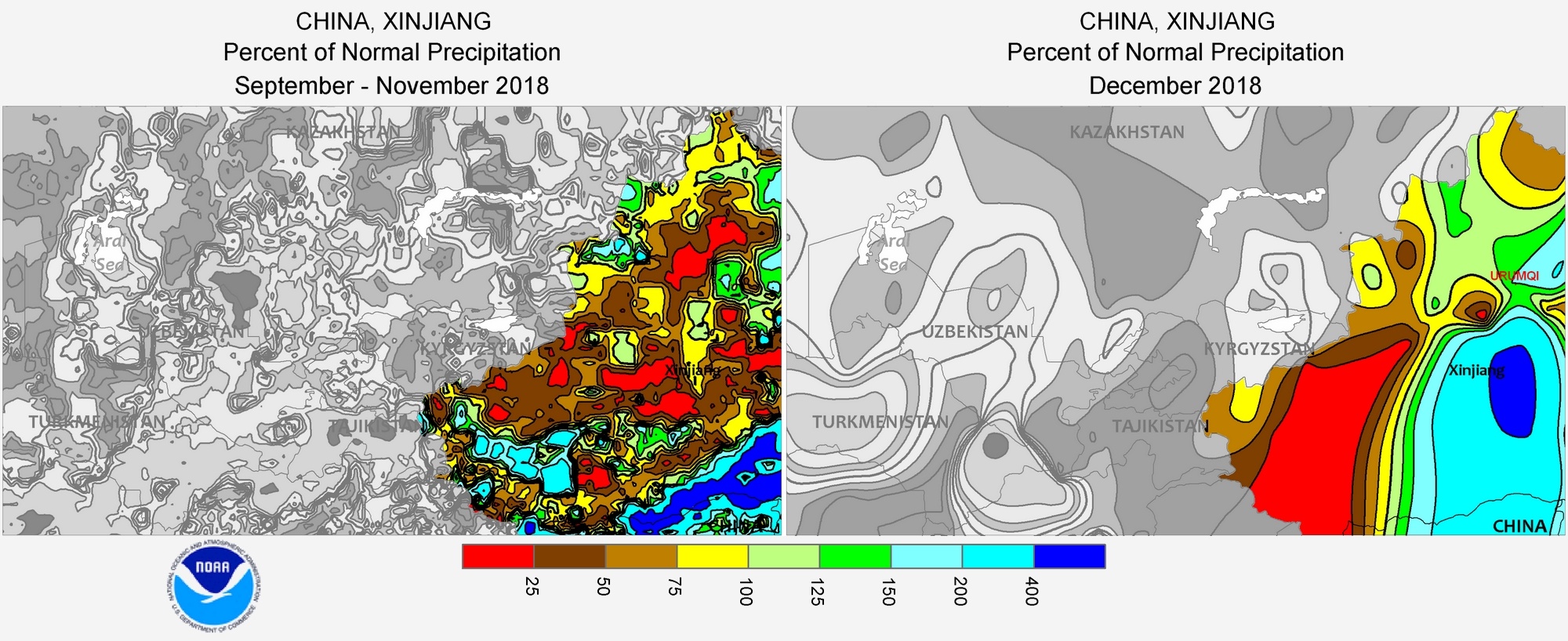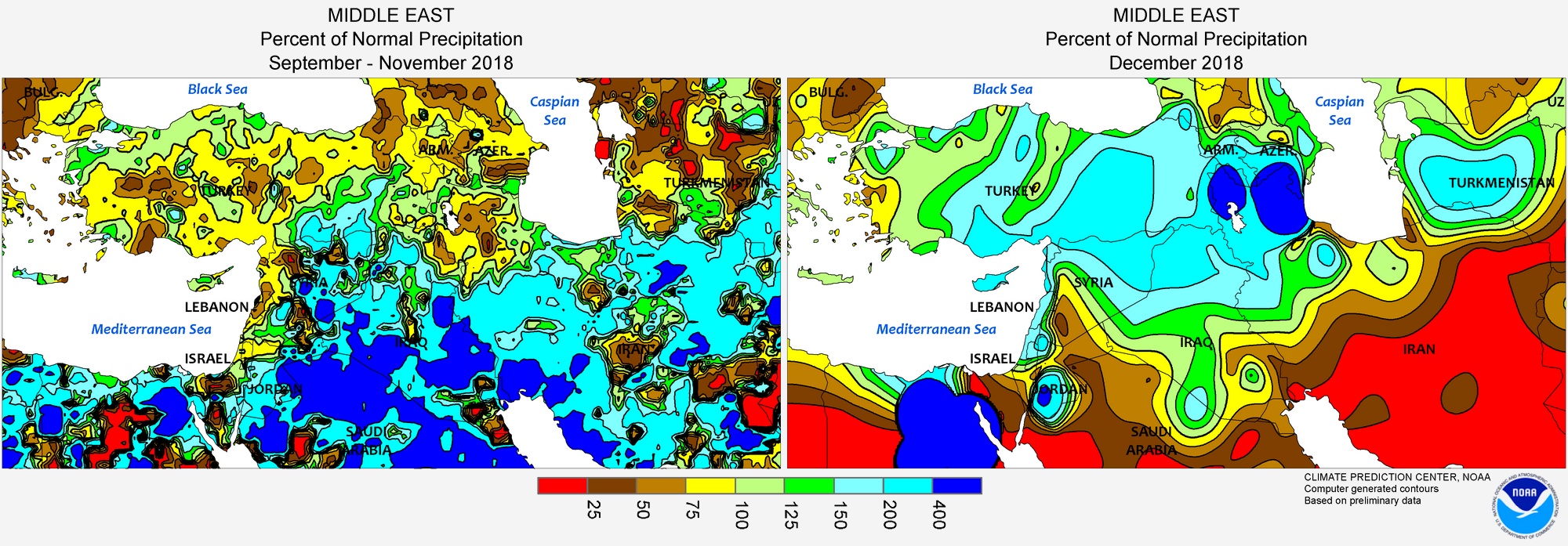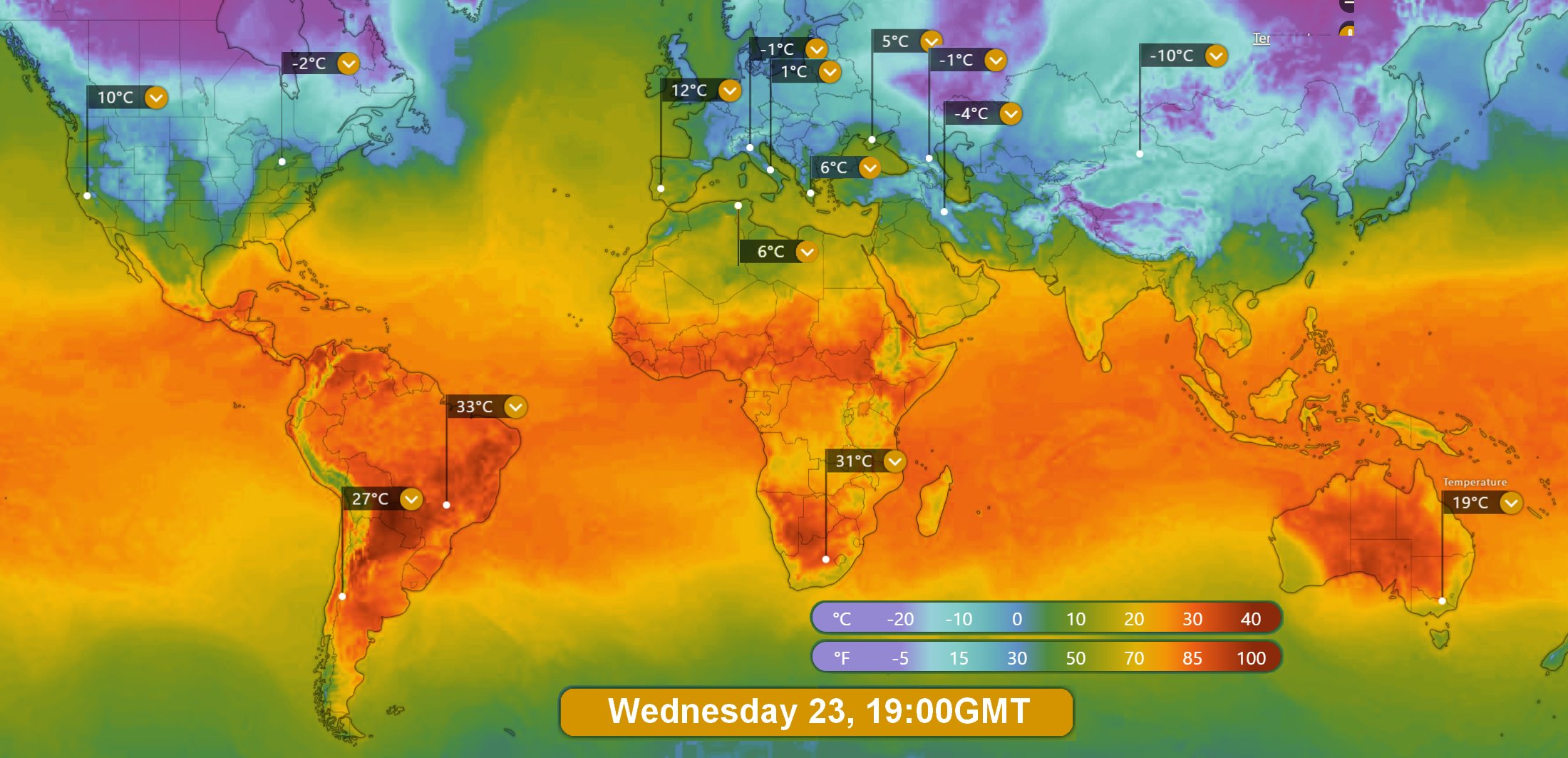California: returning drought conditions: “It’s not if, it’s when”.
California has been receiving a tremendous amount of rain recently, with news reports of flooding in some areas. Rainfall was heaviest along the coast north of Los Angeles, however the majority of the state has received significant amounts of rainfall. Thanks to these storms which swept through California in recent weeks, state’s reservoirs are healthy and full, a good sign for the water supply according to local press. Nearly all California reservoirs are at or above average levels. Overall, 580 billion gallons (2.19 km3) of water were added across the state since Jan. 1. Some major water sources, such as the San Luis Reservoir in Merced are near capacity (82% full).
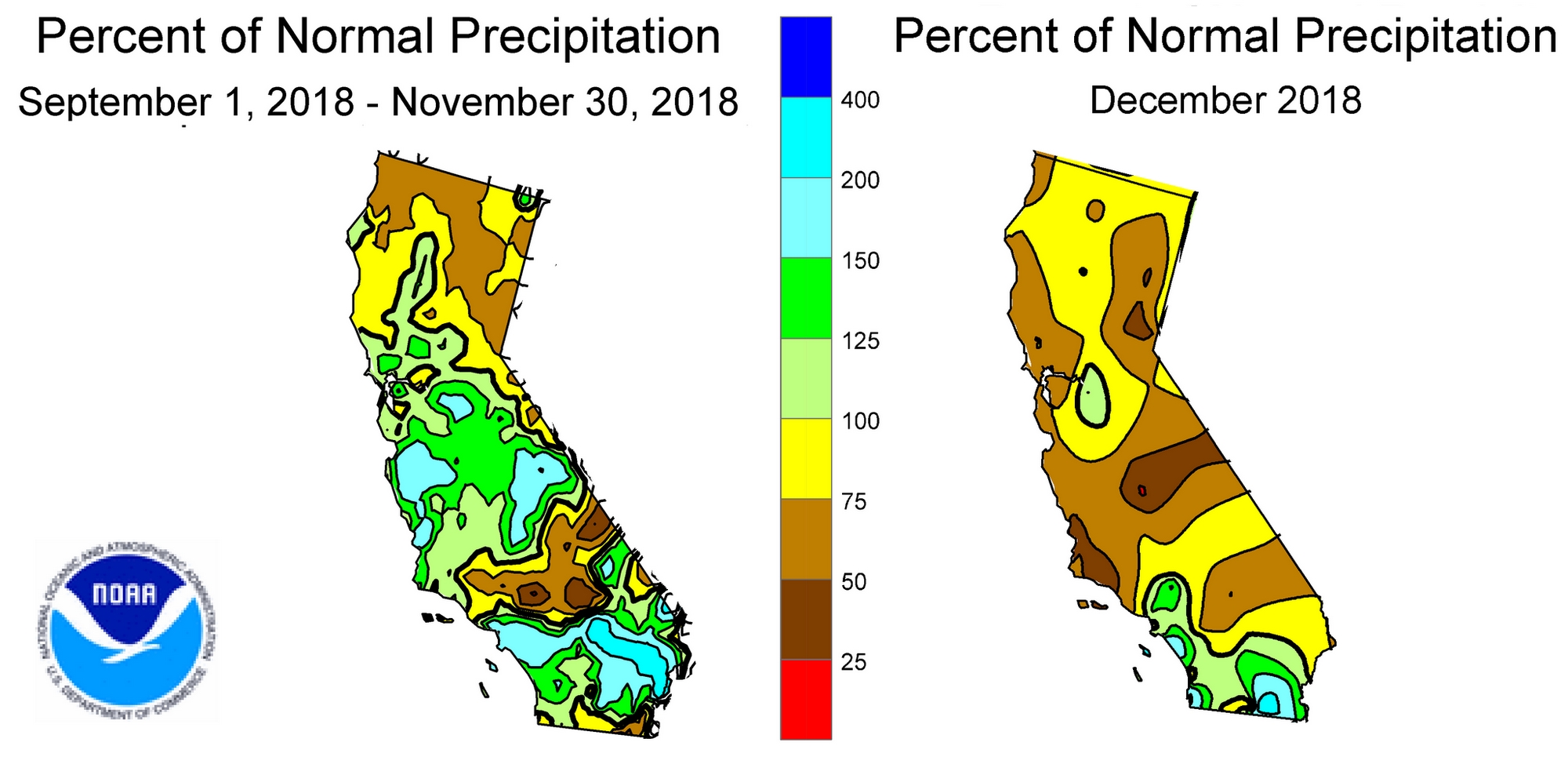
The Sierra Nevada snowpack— a major source of water which state water departments monitor throughout the year — is looking good, too, with snow measuring 115% of average on 22 January, compared with 26% of average the same day last year.
After a relatively dry fall, the wet weather has been welcome news. The hope is that the rain and snow will continue, topping off the year with slightly above-average water supply levels. However, the Department of Water Resources spokesman Chris Orrock said it’s hard to tell what shape the state’s water supply will be in when the rainy season is over. The state can’t only rely on a rainy January, he said, and another drought is always a possibility.
After a years-long drought that sucked the state’s water resources dry, experts were thrilled by a “miracle March” in 2017, when the rain came pouring down, making it a record-breaking water year and the rainiest since 1895. But in 2018, water levels returned to below average.
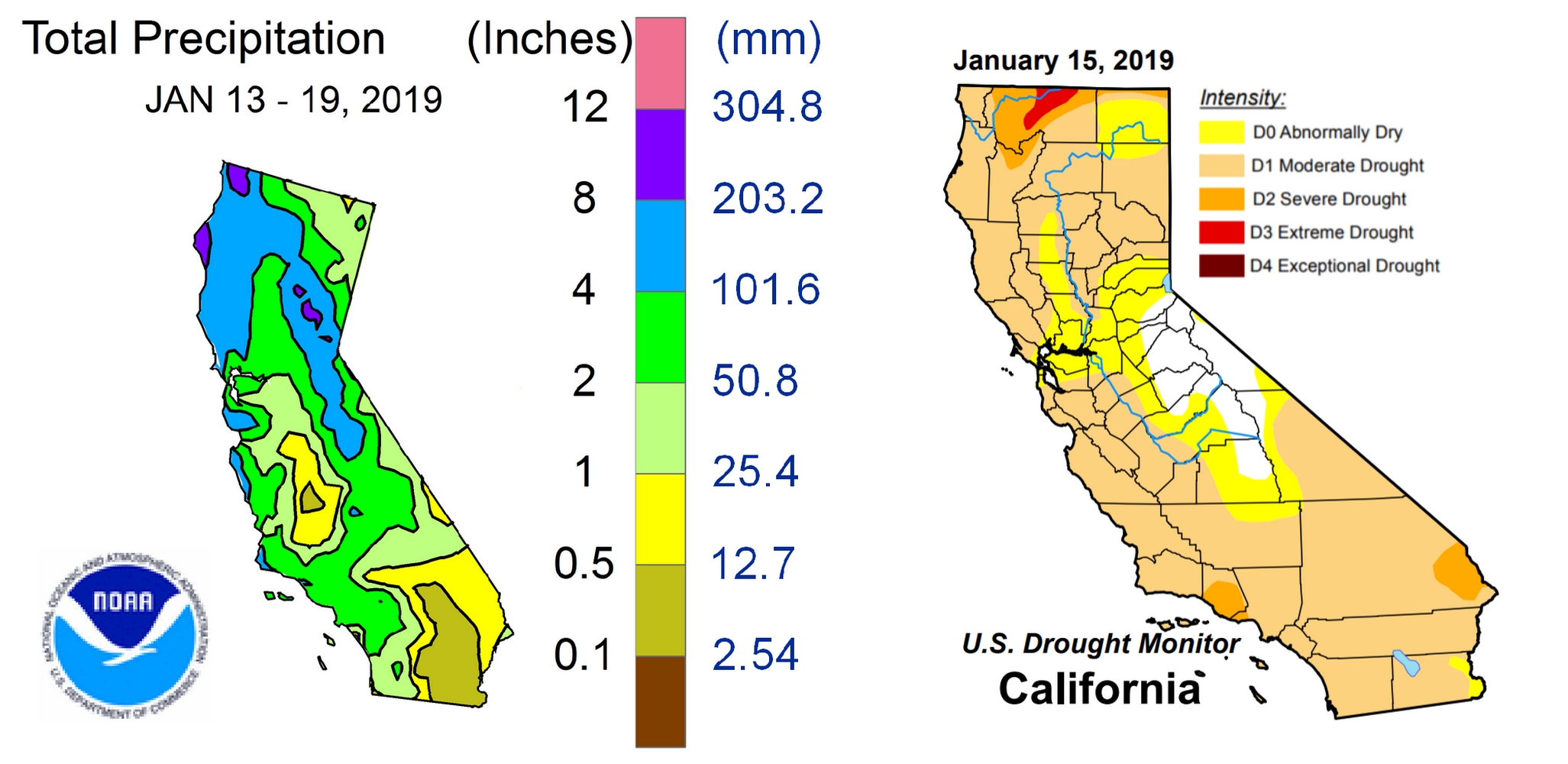
To take into account this difficult situation and some environmental concerns, the State has proposed moving more water from farms and cities to the Delta. In an unprecedented move, the Water Resources Control board voted in December to require water users to leave more water in the lower San Joaquin River to improve water quality and help fish.
Past cutbacks have focused on users who drew directly from the Delta. Now, for the first time, limits would reach far upstream, hitting water diverters who have never faced such restrictions, even though their usage greatly reduces the Delta’s supply.
The San Joaquin Valley’s powerful irrigation districts would have to reduce the amount they pull from the Stanislaus, Tuolumne and Merced rivers, tributaries of the San Joaquin, by about 15 percent. But the water users, many of whom hold powerful century-old water rights, argue that such a large cutback would harm both farmers and urban residents. The state’s plan would require major regulatory changes. California Gov. Jerry Brown offered a compromise agreement in December shortly before he left office, but many environmental groups panned the governor’s proposal.
The water board has yet to accept or decline the compromise; it has until March to study its potential effects. And no vote’s been scheduled on the second part of the state plan, which involves the Sacramento Valley’s rivers.
Acording to California professional sources, the water allocation for this year has not been announced as of yet for the Westlands water district. The Sustainable Groundwater Management Act (SGMA) will go into effect in 2022, but no one knows what this will do as of yet.
The situation in other processing regions
In the Mediterranean Basin

In Xinjiang
In the Middle East
Some complementary data
Temperatures measured on Wednesday 23 January at 19h GMT
Source : freshplaza.com, latimes.com, hcn.org, NOAA, windy.com





